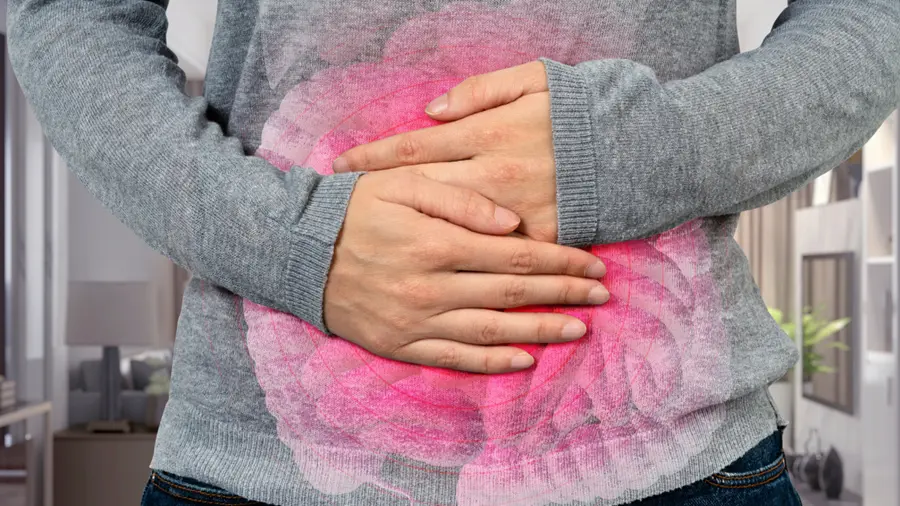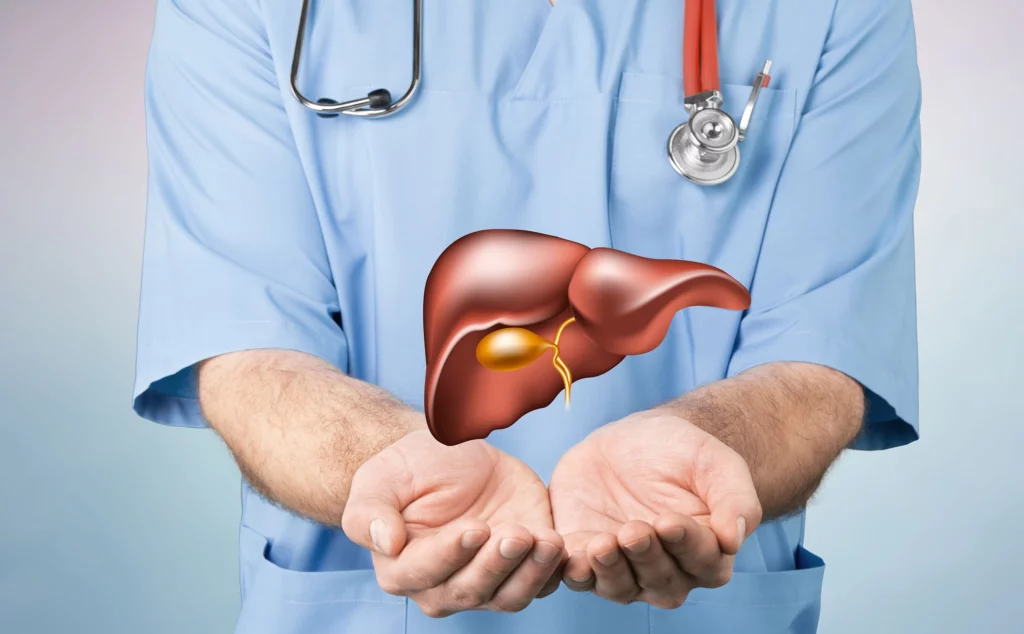Ulcerative colitis (UC) is a chronic inflammatory bowel disease (IBD) that causes inflammation and ulcers (sores) in the lining of the colon (large intestine) and rectum. It can lead to long-term issues such as abdominal pain, diarrhea, and a significant impact on a person’s quality of life. Managing ulcerative colitis involves a multifaceted approach that includes medication, lifestyle adjustments, and, in severe cases, surgery.
This comprehensive guide will delve into the causes, symptoms, types, diagnosis, treatment options, dietary recommendations, complications, and tips on how to live with ulcerative colitis.
1. Understanding Ulcerative Colitis
What is Ulcerative Colitis?
Ulcerative colitis is an autoimmune disease in which the body’s immune system mistakenly attacks the lining of the colon, causing chronic inflammation. Over time, this inflammation leads to the formation of ulcers that bleed and produce pus. The condition usually begins in the rectum and can spread upwards to affect the entire colon.
Unlike other inflammatory bowel diseases like Crohn’s disease, which can affect any part of the digestive system, ulcerative colitis is confined to the colon and rectum.
Pathophysiology
The exact cause of ulcerative colitis remains unknown, but several factors may contribute to its development:
- Autoimmune Response: UC is believed to occur when the immune system attacks the colon lining.
- Genetics: People with a family history of ulcerative colitis are more likely to develop the condition.
- Environmental Factors: Pollution, diet, and infections may trigger the onset in genetically susceptible individuals.
Epidemiology
Ulcerative colitis affects about 1 in 500 people in North America and Europe. It can develop at any age but is most commonly diagnosed between the ages of 15 and 30. The condition affects men and women equally, though certain ethnic groups, particularly people of Ashkenazi Jewish descent, have a higher incidence.
2. Types of Ulcerative Colitis
Ulcerative colitis can be categorized based on the extent of the inflammation in the colon. The severity and symptoms vary depending on the type:
Ulcerative Proctitis
- Area Affected: Involves only the rectum.
- Symptoms: Mild rectal bleeding, the urge to defecate, and rectal pain.
- Prognosis: This is often the mildest form of ulcerative colitis.
Proctosigmoiditis
- Area Affected: Affects the rectum and sigmoid colon (lower portion of the colon).
- Symptoms: Bloody diarrhea, cramps, pain on the left side of the abdomen, and urgency to defecate.
Left-sided Colitis
- Area Affected: Inflammation starts at the rectum and extends to the left side of the colon (descending colon).
- Symptoms: Bloody diarrhea, weight loss, loss of appetite, and pain on the left side of the abdomen.
- Prognosis: Can lead to moderate to severe symptoms depending on the extent of inflammation.
Pancolitis
- Area Affected: Affects the entire colon.
- Symptoms: Severe diarrhea with blood, abdominal cramps, fatigue, and significant weight loss.
- Prognosis: Typically more severe, with higher chances of complications.
Fulminant Colitis
- Area Affected: A rare but severe form that affects the entire colon.
- Symptoms: Intense pain, severe diarrhea, dehydration, and risk of colon rupture.
- Prognosis: Considered a medical emergency; it may require immediate surgery.
3. Causes and Risk Factors
While the exact cause of ulcerative colitis remains unknown, several risk factors are believed to contribute to its development:
1. Genetic Factors
- Family History: Having a first-degree relative with UC increases your risk.
- Genes: Researchers have identified several genes associated with an increased risk of developing UC, including those involved in the immune system’s response.
2. Immune System Dysfunction
In UC, the immune system mistakenly targets the colon’s cells, leading to chronic inflammation. The reason for this immune response is unclear but may involve:
- Microbiome Imbalance: An imbalance in gut bacteria could trigger the immune system.
- Infections: Viral or bacterial infections may provoke an inappropriate immune response.
3. Environmental Factors
- Diet: Although no specific diet causes UC, a Western diet high in fat, sugar, and processed foods may increase inflammation.
- Antibiotics: Overuse of antibiotics can disrupt the gut microbiome, potentially contributing to inflammation.
- Pollution: Exposure to pollutants and toxins may increase the likelihood of developing IBD.
4. Age and Ethnicity
- Age: UC commonly develops in young adults between 15 and 30, but it can occur at any age.
- Ethnicity: Ashkenazi Jews and Caucasians are at higher risk, though the condition affects all ethnicities.
4. Symptoms of Ulcerative Colitis
The symptoms of ulcerative colitis can vary in severity depending on the type and extent of inflammation. Common symptoms include:
Gastrointestinal Symptoms
- Chronic diarrhea: Often bloody or with pus.
- Abdominal pain and cramping: Usually in the lower left abdomen.
- Rectal bleeding: A common sign of inflammation in the rectum.
- Urgency to defecate: A feeling of needing to go to the bathroom immediately, even when the colon is empty.
- Tenesmus: A constant feeling of needing to pass stool, but the colon may be empty.
Systemic Symptoms
- Fatigue: Chronic inflammation can lead to extreme tiredness and lethargy.
- Weight loss: Due to malnutrition and reduced appetite.
- Fever: May occur during flare-ups.
- Joint pain and swelling: Inflammation can also affect other areas, leading to arthritis-like symptoms.
Extraintestinal Manifestations
- Skin conditions: Such as erythema nodosum (painful red nodules on the skin).
- Eye inflammation: Conditions like uveitis and episcleritis can develop.
- Liver disease: UC can increase the risk of primary sclerosing cholangitis (PSC), a serious liver condition.
5. Diagnosis of Ulcerative Colitis
Diagnosing ulcerative colitis requires a combination of medical history, physical examination, and diagnostic tests. It’s essential to distinguish UC from other conditions like Crohn’s disease, irritable bowel syndrome (IBS), and infections.
1. Medical History and Examination
- A thorough review of symptoms, family history, and a physical examination is the first step.
- The doctor will ask about the frequency and characteristics of diarrhea, presence of blood in the stool, and abdominal pain.
2. Laboratory Tests
- Blood tests: A complete blood count (CBC) can reveal anemia (due to blood loss) or elevated C-reactive protein (CRP) and erythrocyte sedimentation rate (ESR), which indicate inflammation.
- Stool tests: To rule out infections such as bacterial or parasitic causes of diarrhea.
3. Endoscopic Procedures
- Colonoscopy: The gold standard for diagnosing UC. It allows the doctor to view the colon directly and take biopsies for laboratory analysis.
- Flexible sigmoidoscopy: Similar to a colonoscopy but examines only the lower part of the colon.
4. Imaging Studies
- CT Scan or MRI: These imaging tools help assess the extent of inflammation and complications like abscesses or perforation.
6. Treatment Options for Ulcerative Colitis
While there is no cure for ulcerative colitis, the goal of treatment is to reduce inflammation, control symptoms, and achieve long-term remission.
1. Medications
Anti-inflammatory Drugs
- Aminosalicylates (5-ASAs): These are first-line treatments for mild to moderate UC.
- Examples: Mesalamine (Asacol), Sulfasalazine (Azulfidine).
- Side Effects: Nausea, vomiting, headache.
- Corticosteroids: Used for short-term relief during flare-ups but not recommended for long-term use due to side effects.
- Examples: Prednisone, Budesonide.
- Side Effects: Weight gain, mood swings, increased risk of infections.
Immunosuppressants
- Azathioprine (Imuran), 6-mercaptopurine (6-MP): These suppress the immune system to prevent attacks on the colon lining.
- Side Effects: Increased risk of infections, liver damage, low blood counts.
Biologic Therapies
- Anti-TNF drugs: Target proteins in the immune system that cause inflammation.
- Examples: Infliximab (Remicade), Adalimumab (Humira).
- Side Effects: Increased risk of infections, allergic reactions.
- Integrin inhibitors: Block the movement of immune cells into the colon.
- Examples: Vedolizumab (Entyvio).
JAK Inhibitors
- Tofacitinib (Xeljanz): Used for moderate to severe UC when other treatments have failed.
2. Surgery
Up to 30% of patients with UC may require surgery at some point in their lives. Surgery is usually considered when medications fail, or complications arise.
Colectomy
- Total colectomy: The removal of the entire colon, which can cure UC but necessitates other measures for waste removal.
- Ileostomy: The small intestine is connected to an external bag to collect waste.
- Ileoanal Pouch: The surgeon creates a pouch from the small intestine to function as a rectum, allowing for near-normal bowel movements.
3. Diet and Lifestyle Changes
While no specific diet can cure UC, certain foods can worsen or trigger symptoms, particularly during flare-ups. Keeping a food diary can help identify personal food triggers.
Foods to Avoid During Flare-ups
- High-fiber foods (raw fruits, vegetables).
- Dairy products (if lactose intolerant).
- Caffeine, alcohol, and carbonated beverages.
- Spicy foods and fatty foods.
Foods to Include
- Low-fiber fruits (bananas, melons).
- Cooked vegetables (zucchini, carrots).
- Lean proteins (chicken, turkey, fish).
- Probiotics (yogurt, kefir) to promote gut health.
Hydration
- It’s essential to stay hydrated, particularly during diarrhea episodes. Water, herbal teas, and clear broths are recommended.
Stress Management
Stress is known to exacerbate UC symptoms. Some effective stress management techniques include:
- Yoga and meditation.
- Cognitive Behavioral Therapy (CBT).
- Exercise: Low-impact activities like swimming or walking.
7. Living with Ulcerative Colitis
Managing ulcerative colitis is about more than just treating symptoms—it involves adapting your life to minimize flare-ups, maintain a healthy lifestyle, and manage the psychological impact of living with a chronic illness.
Coping with Flare-ups
- Medication adherence: Stick to prescribed medications to prevent flare-ups.
- Diet: Avoid foods that trigger symptoms and stay hydrated.
- Rest: Fatigue is common during flare-ups, so prioritize rest and avoid overexertion.
Mental Health
- Many UC patients experience depression and anxiety. Counseling, therapy, or joining support groups can provide emotional relief.
- Support Groups: Connecting with others who have UC can offer encouragement, advice, and a sense of community.
Regular Monitoring
- Regular check-ups and colonoscopies are essential for monitoring disease progression and preventing complications such as colon cancer.
Managing Complications
UC can lead to various complications if left untreated or poorly managed:
- Toxic Megacolon: This life-threatening condition involves rapid colon swelling and may require emergency surgery.
- Colon Cancer: Chronic inflammation increases the risk of colorectal cancer. Regular screening is crucial.
8. Pregnancy and Ulcerative Colitis
Women with UC can have healthy pregnancies with careful management. It is important to work closely with both a gastroenterologist and an obstetrician to monitor the condition throughout pregnancy.
Medication During Pregnancy
- Many UC medications are safe during pregnancy, but some, like methotrexate, should be avoided.
- Folic acid supplementation is often recommended, especially if taking sulfasalazine.
Preconception Counseling
- Women should aim to achieve remission before conception, as active disease increases the risk of complications during pregnancy.
Postpartum Management
- The postpartum period can be challenging for women with UC due to hormonal changes that may trigger a flare-up. Close monitoring is essential.
9. Complications of Untreated Ulcerative Colitis
If left untreated, ulcerative colitis can lead to several serious complications:
1. Toxic Megacolon
- A rare but life-threatening condition where the colon swells rapidly.
- Symptoms: Abdominal pain, bloating, fever, rapid heart rate.
- Treatment: Emergency surgery is often required to remove the colon.
2. Colon Cancer
- The longer someone has UC, the higher their risk of developing colorectal cancer.
- Routine colonoscopies and biopsies are essential for detecting cancer early.
3. Severe Bleeding
- Chronic inflammation can lead to ulcers that bleed, causing anemia.
- Treatment may involve blood transfusions and medication.
4. Perforated Colon
- In severe cases, the colon can rupture, leading to a life-threatening infection known as peritonitis.
- Surgery is typically required to repair or remove the affected part of the colon.
5. Osteoporosis
- Long-term use of corticosteroids can lead to bone loss, increasing the risk of fractures.
- Supplementation with calcium and vitamin D may be necessary.
10. Conclusion
Ulcerative colitis is a lifelong condition that can significantly impact a person’s quality of life. However, with proper medical care, medication, dietary adjustments, and support, individuals with ulcerative colitis can manage their symptoms and live a fulfilling life.
Understanding the symptoms, treatment options, and complications is key to taking control of the disease. Regular monitoring, medication adherence, and proactive management of flare-ups are essential for maintaining remission and preventing long-term complications.
If you have been diagnosed with ulcerative colitis, it’s essential to work closely with a healthcare provider to create a personalized treatment plan. With the right support and lifestyle adjustments, you can lead a healthy and active life.





Wow , what a great and detailed article on this serious illness , thanks for the share.
Good to see that you i liked it, keep visiting us more often.